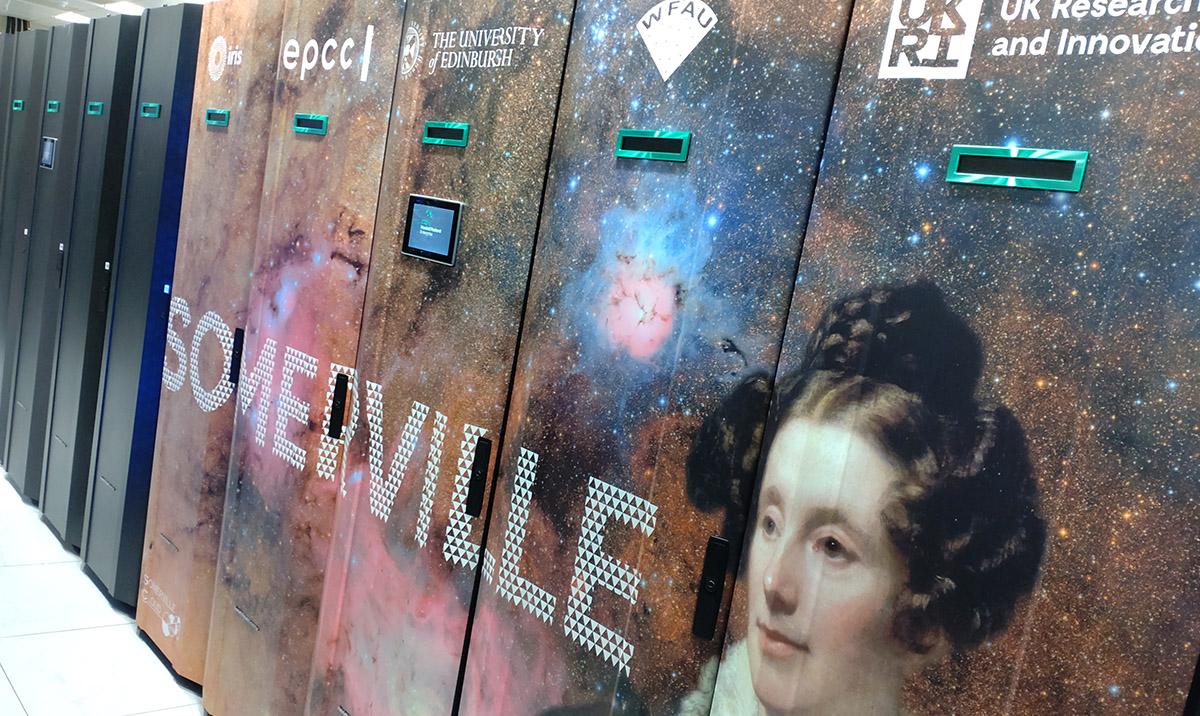New Mary Somerville image adorns astronomy research cloud
24 November 2025
EPCC's Somerville research cloud has received a new look.

This is in part to celebrate its role in the Vera C. Rubin Observatory, which published stunning first images from its new telescope in the summer and which will imminently begin the most detailed optical survey ever of the southern sky: the Legacy Survey of Space and Time (LSST).
The UK astronomy community is a key partner in the LSST, and the Somerville research cloud hosts two critical services to support UK science exploitation of LSST:
- The UK Independent Data Access Centre, which will support data-intensive analysis on the hundreds of Petabytes of survey products that will be generated over the next 10 years
- The Lasair Community Broker, which will receive around 10 million realtime alerts each night from the Observatory, for rapid interrogation and follow-up of key phenomena such as supernovae explosions.
The Somerville research cloud has been in operation since 2017, jointly funded by the LSST:UK Science Centre and the STFC IRIS Programme; alongside LSST hosting astronomy services for the European Space Agency Gaia telescope mission and the University of Edinburgh Wide-Field Astronomy Unit.
The artwork
The service is named in honour of the famous Scottish mathematician and astronomer Mary Somerville, who was a leading figure in the astronomy community in the 19th Century and strove to ensure equality for women in science and the wider society; she was also the first person to whom the term "scientist" was applied.
The mural, created by Aaron Ballantyne (EPCC), is built on a Rubin First Look image of the gas clouds and dust that comprises the Trifid and Lagoon Nebula, which are both several thousand light years away from Earth, and features a portrait of Mary Fairfax Somerville, which is on display in the Scottish National Portrait Gallery in Edinburgh.
Next steps
The Somerville system will grow over the next ten years or so to accommodate the LSST survey as it progresses, culminating in more than 200 Petabytes of astronomical images, catalogues, and scientific measurements. Sitting alongside the Edinburgh International Data Facility, Somerville will be a catalyst for a data-driven revolution, which has seen astronomy move from the desktop PC to some of the largest computing systems in the world.

